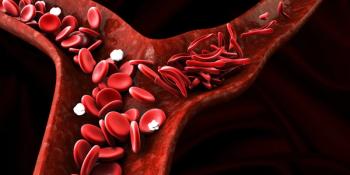
- Immunization Guide for Pharmacists August 2020
- Volume 2
- Issue 1
Improving Vaccination Rates for Unvaccinated and Undervaccinated Groups and Other Vulnerable Populations
Pharmacists have become widely accepted as immunization advocates, educators, and administrators, and an increasing proportion of influenza vaccines are being administered in community pharmacies nationwide.
Routine vaccines and vaccination programs are often considered the single greatest public health intervention in the United States, attributed to substantial reductions in the rates of vaccine-preventable diseases (VPDs) and associated deaths.1 For each birth cohort vaccinated according to the recommended immunization schedule, 33,000 lives are saved and 14 million cases of disease are prevented.1 Vaccinations are also associated with health care cost savings. Direct and indirect health care costs savings were estimated at $9.9 billion and $33.4 billion per birth cohort vaccinated.1 Other notable vaccination achievements include the virtual eradication of the VPDs smallpox and polio.2
Despite these achievements, an estimated 42,000 adults and 300 children still die each year in the United States due to VPDs as a result of not vaccinating or undervaccinating populations.1 Indeed, vaccination rates remain below many Healthy People 2020 national goals (TABLE 1).1,3 Immunizations remain a critical health care need and should be available and accessible to the public to reduce morbidity and mortality from these diseases. (A list of vaccines and the 2020 recommended adult immunization schedule based on medical condition and other indications from the Advisory Committee on Immunization Practices appears on page 33.)
Pharmacists have become widely accepted as immunization advocates, educators, and administrators as defined by the American Pharmacists Association (APhA) and an increasing proportion of influenza vaccines are being administered in community pharmacies nationwide.4,5 Pharmacists are often regarded as approachable health care providers and frequently receive high marks on honesty and ethics polls.6 Because of these factors, pharmacists have a great opportunity to leverage their strong interpersonal communication and relationship skills to improve vaccination rates and expand vaccination activities by targeting unvaccinated and undervaccinated populations. This article includes counseling points for pharmacists to help increase vaccination rates among the most vulnerable and high-risk populations in the community.
VACCINATION IN HIGH-RISK GROUPS
Research has shown that when a provider such as a pharmacist recommends a vaccine and then offers to provide the vaccine during the same encounter, a patient is more likely to get vaccinated.7 Attempts should be made to expand immunization services to better identify, recommend, and administer vaccines to unvaccinated, undervaccinated, and vulnerable populations— such as those with chronic medical conditions, older individuals, and people who smoke—to prevent VPDs and associated complications.8 For example, rates of pneumococcal pneumonia are 3 to 9.8 times higher for people aged 18 to 64 years who have chronic heart disease, lung disease, or diabetes.9 Rates for invasive pneumococcal disease (IPD) are even higher at 3.6 to 7.7 times, respectively.
Individuals of more advanced age (> 64 years) also are at increased risk of a VPD due to immune senescence, the gradual deterioration of the immune system over time making the individual more susceptible to disease and infection.10 Varicella zoster virus, which initially causes chickenpox, remains subsequently dormant for decades in the central nervous system following the initial infection and may reemerge as shingles later in life.11 The lifetime risk of developing shingles is approximately 30%.12 Older individuals also may not respond as well to vaccinations as younger or healthier people. For example, the efficacy of standard influenza vaccine is approximately 50%, at most, in the older population and as a result, use of adjuvants or higher antigen doses are sometimes used to combat this effect.10
Smokers are also a population at increased risk of VPD. Half of all cases of IPD in otherwise healthy adults are in smokers.13 Among adults aged 18 to 64 years, immunocompetent smokers are 4 times more likely to develop IPD than nonsmokers.13 Response to vaccinations in a smoker also may be variable. Hepatitis B vaccination, for example, may lead to lower antibody levels, and antibodies may also wane quicker after live-attenuated influenza vaccine in this population.8
IMPLEMENTING THE PHARMACIST PATIENT CARE PROCESS
Patient engagement methods to help increase vaccination rates in unvaccinated, undervaccinated, and other vulnerable populations are reviewed in TABLE 2.14-16 Pharmacists also should consider implementing the Pharmacist Patient Care Process (PPCP) into their workflow to consistently evaluate each patient’s vaccination needs. The PPCP is a standardized process of collecting, assessing, planning, implementing, and following up with the patient that can be applied to many patient care services and activities including vaccinations. PPCP can be implemented during the prescription drop-off and input process.17
VACCINATION DURING COVID-19
It is important that pharmacists continue their vaccination activities during the current coronavirus disease 2019 (COVID-19) pandemic to help maintain and improve vaccination rates and minimize any risk of coinfection or complications with severe acute respiratory syndrome coronavirus 2.18 As of August 11, 2020, there have been approximately 5 million cases and more than 162,000 deaths related to COVID-19 in the United States.19
As a result of stay-at-home orders and business closings required by the national health emergency, rates of noninfluenza and measles-containing pediatric vaccinations have declined.20 There is also concern that adult immunization rates may decline as people choose to forgo their routine health care needs.18 To protect both patients and pharmacy staff during routine vaccinations and pharmacy visits, CDC-recommended guidelines on the use of personal protective equipment (face masks, face shields, and gowns) should be followed, and the pharmacy should implement various engineering and administration controls to help mitigate and prevent the spread of COVID-19, such as limiting the number of patients at one time, using floor markings and signs to maintain social distancing, and providing hand sanitizer containing at least 60% alcohol for customers.18
MANAGING VACCINE HESITANCY
Despite these added infectious disease precautions, individuals may still be hesitant about receiving necessary vaccinations or may just be concerned about receiving vaccines for any number of reasons, such as lack of awareness of national vaccine recommendations, misconceptions of vaccine safety and efficacy, cost, and more.21 Referred to as vaccine hesitancy, this delay in acceptance of a vaccine or refusal of vaccines altogether, despite the availability of vaccination services, is often a complex issue of time, place, and vaccine.22 For example, patients traveling overseas may be interested only in those travel-related vaccines that they need for their vacation and may choose to defer or decline routine vaccine recommendations such as influenza, even though they may have an indication for that vaccine.23 Although overcoming vaccine hesitancy may be challenging, the most effective interventions that have addressed it and resulted in a 25% or greater uptake in vaccination include the following24:
- targeting unvaccinated or undervaccinated populations or specific populations,
- increasing the patient’s vaccine knowledge and awareness of the importance of vaccinations,
- improving the convenience and access to vaccination, and • engaging local religious or other influential community leaders to help communicate the importance of vaccination to their followers.
In a 2015 systematic review by Jarrett and colleagues, the authors noted that multicomponent strategies were most effective and successful, particularly when the intervention was tailored to a specific population that addressed their specific concern(s). Interventions such as improving data collection and monitoring processes, extending clinic hours, offering cash-based incentives for vaccination, and using passive interventions such as posters or websites to communicate vaccine information were less effective when used on their own.24
However, it is still possible that these lesser effective interventions could be used as part of a multicomponent strategy to more effectively increase vaccine uptake. Each practice setting will ultimately need to determine what measures to implement and how best to implement them for their specific situation.24
CONCLUSIONS
Vaccines have substantially improved public health and wellness around the world. Outbreaks of VPD can be easily prevented by maintaining high vaccination rates. Despite this simple intervention, vaccination rates for many VPDs in the United States still remain below national goals. Pharmacists are well positioned to help increase access to and awareness of vaccines and their importance in order to improve vaccination rates, particularly among the unvaccinated and undervaccinated groups represented in the Healthy People 2020 goals and other vulnerable populations such as those with heart disease, lung disease, diabetes, smokers, and older individuals. General patient engagement strategies reviewed in this article as well as the PPCP can be used to help identify, recommend, administer, and document vaccinations. Pharmacists also can develop multipronged interventions in the pharmacy and tailor them to the specific population of focus to help increase the chances of vaccine uptake. Enhancing a vaccination service involves many site-specific considerations and can be implemented differently in different practice settings; however, there are important patient care and public health benefits in doing so.
KARL HESS, PHARMD, APH, CTH, FCPHA, FAPHA, AFTM RCPS (GLASG), is an associate professor of pharmacy practice and the director of Community Pharmacy Practice Innovations at Chapman University School of Pharmacy in Irvine, California.
REFERENCES
- Immunization and infectious diseases. Office of Disease Prevention and Health Promotion. Updated July 31, 2020. Accessed July 31, 2020. https://www. healthypeople.gov/2020/topics-objectives/topic/immunization-and-infectious-diseases
- Greenwood B. The contribution of vaccination to global health: past, present and future. Philos Trans R Soc Lond B Biol Sci. 2014;369(1645):20130433. doi:10.1098/rstb.2013.0433
- Immunization and infectious diseases data details. Office of Disease Prevention and Health Promotion. Updated July 31, 2020. Accessed August 3, 2020. https:// www.healthypeople.gov/node/3527/data-details
- Bach AT, Goad JA. The role of community pharmacy-based vaccination in the USA: current practice and future directions. Integr Pharm Res Pract. 2015;4:67- 77. doi:10.2147/IPRP.S63822
- National and state-level place of flu vaccination among vaccinated adults in the United States, 2014-2015 flu season. CDC. Updated April 10, 2018. Accessed July 21, 2020. https://www.cdc.gov/flu/fluvaxview/place-vaccination-2014-15.htm
- Reinhart RJ. Nurses continue to rate highest in honesty, ethics. Gallup. January 6, 2020. Accessed July 21, 2020. https://news.gallup.com/poll/274673/nursescontinue- rate-highest-honesty-ethics.aspx
- Standards for practice: vaccine administration & referral. CDC. Updated May 2, 2016. Accessed July 21, 2020. https://www.cdc.gov/vaccines/hcp/adults/ for-practice/standards/referral.html
- Zimmermann P, Curtis N. Factors that influence the immune response to vaccination. Clin Microbiol Rev. 2019;32(2):e00084-18. doi:10.1128/CMR.00084-18
- Nowalk MP, Moehling KK, Zhang S, Raviotta JM, Zimmerman RK, Lin CJ. Using the 4 Pillars to increase vaccination among high-risk adults: who benefits? Am J Manag Care. 2017;23(11):651—655. doi:10.1016/j.vaccine.2016.07.053
- Wagner A, Weinberger B. Vaccines to prevent infectious diseases in the older population: immunological challenges and future perspectives. Front Immunol. 2020;11:717. doi:10.3389/fimmu.2020.00717
- Kennedy PGE, Gershon AA. Clinical features of varicella-zoster virus infection. Viruses. 2018;10(11):609. doi:10.3390/v10110609
- Saguil A, Kane S, Mercado M, Lauters R. Herpes zoster and postherpetic neuralgia: prevention and management. Am Fam Physician. 2017;96(10):656-663
- CDC; Advisory Committee on Immunization Practices. Updated recommendations for prevention of invasive pneumococcal disease among adults using the 23-valent pneumococcal polysaccharide vaccine (PPSV23). MMWR Morb Mortal Wkly Rep. 2010;59(34):1102-1106
- Ha DR, Hurley-Kim K, Hess KM. Implementing and expanding vaccination services: an updated review for routine vaccinations. National Community Pharmacists Association. Accessed August 6, 2020. http://www.ncpa.co/issues/ APSEPT19-CE.pdf
- US Department of Health and Human Services. Healthcare provider office information. March 2020. Accessed July 31, 2020. https://www.cdc.gov/vaccines/ hcp/adults/downloads/patient-intake-form.pdf
- Immunization Action Coalition. Which vaccines do I need today? April 2020. Accessed July 31, 2020. https://www.immunize.org/catg.d/p4036.pdf
- Bach A, Goad J. Applying the Pharmacists Patient Care Process to immunization services: a resource guide for pharmacists. American Pharmacists Association. 2017. Accessed August 6, 2020. https://www.pharmacist.com/sites/ default/files/Pharmacists%20Patient%20Care%20Process%20Module%20for%20 Immunizations%20Services%20-%20FINAL.pdf
- Won K, Hess K. Vaccinating adults amid crisis proses challenges. Pharmacy Times. June 24, 2020. Accessed July 21, 2020. https://www.pharmacytimes.com/publications/ supplements/2020/june2020/vaccinating-adults-amid-crisis-poses-challenges
- Cases and deaths in the U.S. CDC. Updated August 11, 2020. Accessed August 11, 2020. https://www.cdc.gov/coronavirus/2019-ncov/cases-updates/ us-cases-deaths.html
- Bramer CA, Kimmins LM, Swanson R, et al. Decline in child vaccination coverage during the COVID-19 pandemic — Michigan Care Improvement Registry, May 2016-May 2020. MMWR Morb Mortal Wkly Rep. 2020;69(20):630-631. doi:10.15585/mmwr.mm6920e1
- Doherty M, Schmidt-Ott R, Santos JI, et al. Vaccination of special populations: protecting the vulnerable. Vaccine. 2016;34(52):6681-6690. doi:10.1016/j. vaccine.2016.11.015
- Improving vaccination demand and addressing hesitancy. World Health Organization. Updated June 17, 2020. Accessed July 31, 2020. https://www.who. int/immunization/programmes_systems/vaccine_hesitancy/en/
- Hess KM, Dai CW, Garner B, Law AV. Measuring outcomes of a pharmacist- run travel health clinic located in an independent community pharmacy. J Amer Pharm Assoc (2003). 2010;50(2):174-180. doi:10.1331/JAPhA.2010.09204
- Jarrett C, Wilson R, O’Leary M, Eckersberger E, Larson HJ; SAGE Working Group on Vaccine Hesitancy. Strategies for addressing vaccine hesitancy — a systematic review. Vaccine. 2015;33(34):4180-4190. doi:10.1016/j. vaccine.2015.04.040
Articles in this issue
over 5 years ago
Back-to-School Vaccinations Recommended in 2020over 5 years ago
New Vaccines in the Pipeline 2020over 5 years ago
Shingles Vaccine Counseling Points for 2020over 5 years ago
CDC Issues Guidelines for Immunization During COVID-19 Pandemicover 5 years ago
Guide to Child and Adolescent Immunizationsover 5 years ago
Guide to Adult ImmunizationsNewsletter
Stay informed on drug updates, treatment guidelines, and pharmacy practice trends—subscribe to Pharmacy Times for weekly clinical insights.

















































































































































































































